![Employee Survey PP > Top Card> 2025-09 [UPDATE]](https://imagekit.gallup.com/fusion/tr:n-emd_tmpl_dlp_bg_lg/WORKPLACEV9CMS/2a1fad3f-74dc-4d64-a801-428f3da903ae.jpg)
Why Are Employee Surveys Important, and Are They Effective?
Employee surveys are important because they give leaders structured insight into how employees think, feel and perform. When surveys are thoughtfully designed, strategically executed and followed by meaningful action, they become effective tools that uncover engagement drivers, highlight risks and guide leaders in making changes that improve both culture and business performance.
Why Are Employee Surveys Important?
Why Are Employee Surveys Important?
Employee surveys are critical tools for improving organizational performance because they give business leaders direct access to what their people are thinking and feeling in a way that's structured and scalable.
When leaders use surveys strategically, they pinpoint factors that hinder or help organizational performance. This includes driving employee engagement, monitoring burnout risk and identifying which teams need support.
Why organizations use employee surveys:
-
to understand and track key elements of the employee experience over time
-
to measure and manage workplace engagement, a proven driver of productivity, retention and profitability
-
to give employees a voice in shaping culture, strategy and priorities
-
to uncover barriers to performance that might otherwise go unnoticed

Surveys Show Leadership Commitment
Surveys help organizations understand the employee dynamics that influence a workplace's success, and they signal leadership's commitment to responding to the employee voice, which is foundational to engaging employees.
In fact, if leaders conduct a survey but take no action on the results, employee engagement will likely decrease and turnover will increase. A survey is only as valuable as the leadership response that follows. When employees see action, they trust the process and engage more deeply.
When combined with clear communication and follow-through, employee surveys become a powerful tool leaders can use companywide to build trust, improve performance and strengthen the employee experience.
Are Employee Surveys Effective?
Are Employee Surveys Effective?
Employee surveys are effective when they are thoughtfully designed, strategically executed and followed by meaningful action. The survey itself does not improve performance or culture. What matters is how leaders interpret the results and what they do in response.
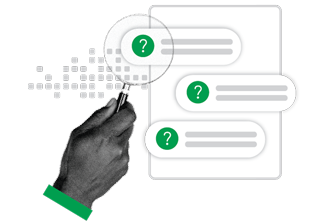
What makes an employee survey effective:
-
It focuses on actionable factors that link to performance.
-
It’s grounded in research.
-
It generates results that leaders can understand and apply immediately.
-
It leads to clear next steps at the team, department and company levels.
-
It’s part of an ongoing performance and culture strategy, not a one-time event.
Gallup research shows that simply asking for employee feedback without acting on it can backfire. With employee engagement surveys, for example, employees become disengaged when they feel their input is ignored. That’s why many surveys must be paired with manager conversations, team-based goal setting and leadership accountability.
The most effective organizations treat surveys as part of a larger performance system, with clear expectations and internal communication for how managers, teams and individual employees will review and respond to results.
The Role of the Manager
Effectiveness also depends on managers. Gallup’s research shows that managers account for 70% of the variance in team engagement. Giving them access to results and equipping them to act is essential to motivate employees.
Case Study: Engagement Survey Results
Gallup’s clients that follow our best practices for employee engagement see measurable gains. For example, business units in the top quartile of engagement experience 78% less absenteeism and 23% higher profitability compared with those in the bottom quartile.
When used consistently and followed by action, employee surveys become a catalyst for sustained performance.
What Are the Different Types of Employee Surveys?
What Are the Different Types of Employee Surveys?
Not all employee surveys serve the same purpose, and not all of them lead to meaningful change. Choosing the right type of survey depends on what your organization is trying to understand, improve or track over time. Selecting survey formats based on their intent, timing and ability to generate actionable insights will help you build an agile strategy aligned with your organizational goals.
Common types of employee surveys:
Employee engagement surveys diagnose the factors that influence performance, such as clarity of expectations, recognition, and connection to mission.
Pulse surveys are short, frequent surveys designed to monitor trends and changes in the employee experience or engagement over time.
Onboarding surveys capture early feedback from new hires about their experience and perceptions in their first weeks on the job.
Exit surveys help organizations understand why employees leave and how to reduce unwanted turnover.
Culture or experience surveys assess broader elements of the workplace, such as trust in leadership, inclusion, or communication effectiveness.
Wellbeing surveys measure aspects of employee wellbeing, including stress, burnout and work-life balance.
How Survey Types Work Together
Each type serves a different role. For example, employee engagement surveys provide foundational insights, while pulse surveys help teams respond in real time. Used together, they create a continuous listening strategy that supports sustained performance.
The most effective survey programs use a combination of these tools to gather feedback and connect what employees are saying to what the organization is trying to achieve.
Building a Strategy That Drives Results
Ultimately, the best survey strategy is one that helps leaders listen with intention, act with clarity and adapt over time. These surveys provide essential insights that inform everything from leadership development to broader employee engagement programs.
A comprehensive employee engagement program often includes a mix of pulse, engagement and employee experience surveys.
Gallup Access gives you the tools to run engagement, pulse and employee experience surveys, all in one platform, backed by decades of research.
Are Employee Surveys Anonymous?
Are Employee Surveys Anonymous?
Employee surveys are often anonymous. What truly matters is whether employees believe their responses are confidential and used responsibly. Without that trust, even anonymous surveys may yield guarded or incomplete feedback.
When employees don’t believe their input is truly anonymous, response rates drop and the data become less reliable. Protecting confidentiality is an ethical necessity that’s essential for getting an accurate view of your culture.
What you need to know about survey anonymity:
-
Most surveys are anonymous by design, especially those run by a third-party provider.
-
Results are aggregated, typically requiring a minimum number of responses (e.g., five or more) before reporting.
-
Open-text comments are included, but identifying individuals through comments is discouraged and often restricted.
-
Perceived anonymity matters. Employees need to trust the process, not just the promise of anonymity.
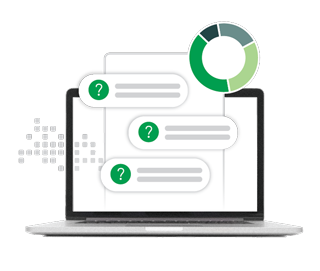
Gallup’s Approach to Confidentiality
Gallup designs its employee engagement surveys to protect confidentiality while still providing leaders with actionable insights at the team level. We report aggregated results, never individual results, and apply minimum response thresholds to preserve anonymity.
Gallup’s confidentiality policy also ensures that open-text comments and individual data are not reported in ways that could identify respondents. Unless explicit consent is provided, individual responses remain private. This approach builds the trust needed for employees to respond honestly and thoroughly.
Third-party administration through Gallup Access adds a layer of credibility that increases employee confidence and encourages honest participation.
How Organizations Should Communicate About Confidentiality
Organizations should clearly communicate how survey data will be collected, used and protected. When employees understand how their feedback will be handled and see that it leads to meaningful action, they’re more likely to respond openly and honestly.
In the end, survey anonymity is a cultural commitment to listening without judgment and acting with integrity.
How Often Should Employee Surveys Be Conducted?
How Often Should Employee Surveys Be Conducted?
The right survey cadence depends on what you're trying to learn and how quickly you can act. Surveys should be conducted frequently enough to capture meaningful trends, but not so often that results go unused or employees experience survey fatigue.
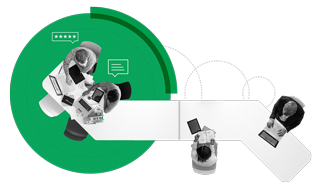
Best-practice survey timing:
-
Semiannual engagement surveys provide a deep look at the core drivers of performance and culture.
-
Quarterly or monthly pulse surveys can track progress, monitor change or explore targeted topics in real time.
-
Event-based surveys, such as after onboarding, exiting or a major change, offer valuable situational insights.
Between formal survey cycles, many organizations use informal check-ins or brief pulse questions to keep the conversation going and reinforce a culture of ongoing listening.
Survey Cadence Is Also a Leadership Commitment
Survey cadence should match your managers’ capacity to review and act on results. When survey timing is paired with clear expectations and tools for follow-up, it becomes a driver of accountability.
Survey Platforms Support Survey Timing
Platforms like Gallup Access help organizations manage timing, automate follow-ups and ensure the right cadence for their needs.
How Should Employee Survey Results Be Analyzed?
How Should Employee Survey Results Be Analyzed?
Employee surveys generate valuable data, but without a sense of purpose or careful analysis, those data won’t lead to meaningful action. The goal is to move beyond gathering data and toward revealing insights about your culture, leadership and performance environment.
Best practices for analyzing survey results:
-
Start with big-picture trends, but lead with team-level insights. Look at your organizational and departmental data, but remember that the biggest opportunity to improve engagement is at the manager level. Managers have the most direct impact on employees' experience.
-
Focus on a few key items that matter most. Don’t try to act on everything. Prioritize the issues or engagement items that are most relevant to your team and tied to your business outcomes.
-
Make the data usable for managers. Provide tools, time and talking points. Your survey is only as good as a manager’s ability to understand and act on the results.
-
Look for patterns, but use benchmarks wisely. Trends matter more than isolated scores. Use internal comparisons over time and Gallup’s global benchmarks to contextualize results.
-
Protect confidentiality to protect data integrity. Follow minimum response thresholds and aggregate reporting standards so employees can be honest and the data remain valid.
Analyze at Every Level
Gallup recommends analyzing results at multiple levels, ranging from the organization-wide view to the individual team, and focusing on patterns that can guide decision-making.

Put Insights Into Managers’ Hands
It’s not enough to interpret the data in a leadership meeting. The most effective organizations bring managers into the conversation, giving them access to their team-level results and guidance on what to do next. When analysis leads to accountability, survey results become a lever for change.
As for timing, survey data lose impact if they sit unused. Timely analysis, ideally within days or weeks, helps leaders and managers act while feedback is still fresh.
Support Managers With the Right Tools
Analysis is only the first step. The goal is to equip managers to hold team conversations, build action plans, and track progress that positively impacts team and business performance.
Data analysis tools like those on Gallup Access help clarify complex datasets. Dashboards, heatmaps and priority views can help managers identify the areas most worth acting on and quickly see how their team compares.
How Should Organizations Communicate Employee Survey Results?
How Should Organizations Communicate Employee Survey Results?
How leaders communicate survey results is just as important as what the results show. Employees want to know that their feedback was heard and that it will be used to make their workplace better. When organizations are transparent about survey findings and next steps, it creates a culture of trust and improves future participation.
Best practices for communicating survey results:
-
Start at the top. Senior leaders should share high-level findings and commit to listening and acting.
-
Equip managers. Give team leaders access to their group’s results and provide tools for leading meaningful conversations. Managers should lead team conversations that focus on results, strengths and shared ownership of next steps.
-
Be timely and transparent. Communicate results shortly after the survey closes, while feedback is still fresh and while employees are still watching.
-
Explain what happens next. Outline clear, realistic next steps so employees know what to expect and what’s expected of them.
-
Make results meaningful. Don’t overwhelm employees with raw data. Highlight what matters most and connect it to team goals.
-
Close the loop. Regularly update teams on progress made and actions taken in response to the survey, including broader employee engagement initiatives.
Communication is a critical step in turning feedback into engagement. When communication includes a plan, and that plan is followed up with real action, survey results become a catalyst for trust, momentum and measurable advancement of employee engagement strategies.
What Is an Employee Engagement Survey?
What Is an Employee Engagement Survey?
To understand the value of engagement surveys, it helps to first ask: What is employee engagement? Gallup defines it as the involvement and enthusiasm of employees in their work and workplace.
An employee engagement survey measures the factors that influence how committed, motivated and productive employees are at work. Unlike general satisfaction surveys, engagement surveys focus on the conditions that lead people to contribute their best efforts and stay with the organization over time.
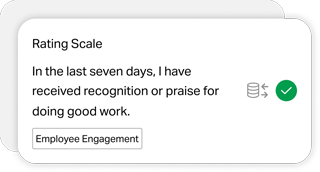
Engagement surveys typically measure whether employees:
-
feel their work is meaningful and aligned with the company’s mission
-
receive recognition, support and development
-
trust their managers and feel connected to their teams
-
see opportunities to grow and contribute
Regular surveys, paired with meaningful follow-up, give leaders a way to monitor progress and respond to what matters most.
Why Gallup’s Q12 Is Different
Organizations often ask how to increase employee engagement. The answer starts with asking the right questions and acting on the results.
Gallup’s approach to measuring engagement is grounded in decades of research. Our Q12 survey evaluates the specific needs employees must have met to perform at their highest level, including clear expectations, recognition, development and connection to purpose.
The Q12 is both a measurement tool and a blueprint, equipping managers with the insights to review results with their teams and co-create action plans that lead to meaningful improvement.
Turning Insights Into Impact
An effective employee engagement tool, like the Gallup Q12, provides leaders with data that can be acted on at the team level to improve outcomes such as productivity, retention and customer loyalty.
Understanding why employee engagement is important helps organizations recognize the value of listening to employees and using their feedback to shape the workplace culture. By understanding what truly matters to employees, leaders gain insight into how to engage employees in a way that has a lasting effect on organizational performance.
What Do Employee Engagement Surveys Measure?
What Do Employee Engagement Surveys Measure?
Employee engagement surveys measure the conditions that influence employee motivation, commitment and performance. Unlike general satisfaction surveys, they assess whether employees’ psychological needs are being met. These needs are directly linked to productivity, retention and a healthy workplace culture.
Key dimensions measured in engagement surveys:

Purpose
Do employees believe in the mission and understand how their work contributes?

Support
Do they feel cared for by their manager and team?

Development
Are there opportunities to grow and improve?

Recognition
Do employees feel seen and appreciated for their work?

Autonomy and clarity
Do they know what’s expected of them and have what they need to do their job?
Gallup’s Approach
Gallup’s research has identified 12 core drivers of engagement, from clarity of expectations to opportunities for development. These are measurable conditions that directly link to outcomes like retention, productivity, profitability and customer loyalty.
Gallup’s Q12 engagement survey is designed to increase employee engagement by measuring these drivers with precision. It gives organizations data they can act on at every level to create a workplace where people thrive and perform.
An employee engagement platform like Gallup Access translates engagement survey results into practical leadership insights that managers can act on to create real change within their teams.
Why It Matters
When you understand how to measure employee engagement and exactly what your survey is measuring, you can turn data into decisions that improve the health of your culture and the strength of your teams. These are benefits of employee engagement that distinguish high-performing workplaces from struggling ones.
What Is an Employee Pulse Survey?
What Is an Employee Pulse Survey?
An employee pulse survey is a brief, focused survey that helps organizations gather timely feedback on specific issues. Unlike full-scale employee engagement surveys, which assess deep drivers of performance and culture, pulse surveys are designed to track sentiment more frequently, often monthly or quarterly.
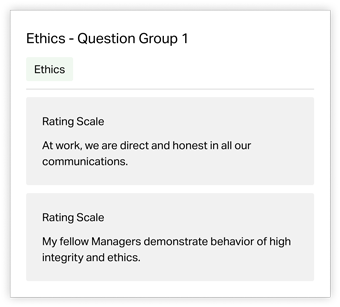
When to use a pulse survey:
-
to track short-term progress on engagement or culture goals
-
to gather quick input on a specific initiative, program or change
-
to monitor morale during restructuring, leadership shifts or external disruption
-
to identify early signs of disengagement or burnout
Pulse surveys are typically short (five to 10 questions), easy to complete, and focused on just one or two themes. When organizations act on the feedback they receive, pulse surveys can strengthen trust, improve responsiveness and support continuous performance improvement.
Pulse surveys give leaders a consistent way to check on the employee experience between formal survey cycles. They’re especially useful during times of change, uncertainty or ongoing improvement efforts.
When to Use Pulse Surveys
Pulse surveys are not designed to replace engagement surveys. They work best when used alongside validated engagement tools, not in place of them.
The real value of a pulse survey lies in the conversations and course corrections it enables. Pulse results should lead to short, focused conversations or adjustments at the team level.
How to Get the Most From Employee Survey Software
How to Get the Most From Employee Survey Software
Modern employee survey software helps organizations turn feedback into practical action that creates measurable outcomes. When used well, the right platform supports every phase of the survey cycle: design, distribution, analysis, communication and follow-up.
What great survey software should enable:
-
customizable survey design aligned with research-backed engagement drivers
-
secure, user-friendly distribution to reach all employees across teams and locations
-
real-time dashboards and reporting that translate data into actionable insights
-
team-level access so managers can view and respond to their own group’s results
-
platform-driven advice based on the survey results that guide targeted action
-
advanced benchmarking that shows how your results compare to those of similar organizations
-
integrated employee engagement tools that support feedback, action planning and team coaching
The best platforms help organizations create a culture of high performance built on continuous listening, accountability and development.
Gallup recommends using survey software as an integrated part of your employee engagement strategy. Employee engagement software like Gallup Access creates a continuous feedback loop between leaders and employees while generating next steps for managers.
Organizations that use modern employee engagement platforms are better equipped to connect insights with leadership decisions, develop more engaged teams and create a workplace where employees feel heard and valued.
Capture the Employee Voice With Gallup Access
Ready to Build a Smarter Survey Strategy?
Explore Gallup Access or talk to a workplace consultant today.
